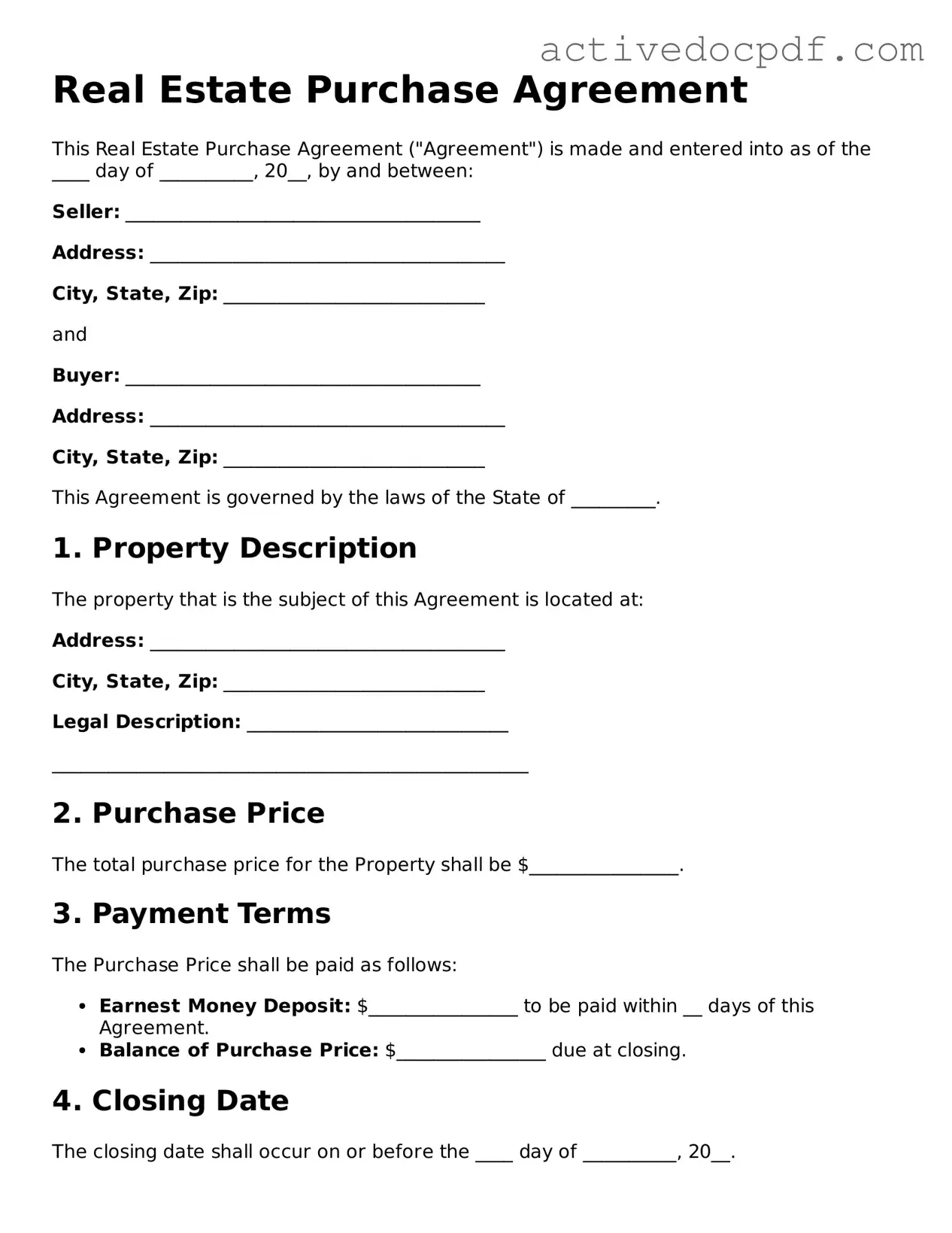What is a Real Estate Purchase Agreement?
A Real Estate Purchase Agreement is a legal document that outlines the terms and conditions under which a buyer agrees to purchase a property from a seller. This agreement serves as a binding contract once both parties have signed it. It typically includes details such as the purchase price, closing date, and any contingencies that must be met before the sale can proceed.
What are the key components of a Real Estate Purchase Agreement?
Key components of a Real Estate Purchase Agreement often include:
-
Parties Involved:
Names and contact information of the buyer and seller.
-
Property Description:
A detailed description of the property being sold, including the address and any relevant legal descriptions.
-
Purchase Price:
The agreed-upon price for the property.
-
Earnest Money:
A deposit made by the buyer to demonstrate serious intent to purchase.
-
Contingencies:
Conditions that must be met for the sale to proceed, such as financing or inspections.
-
Closing Date:
The date when the transaction will be finalized and ownership transferred.
Why is it important to have a Real Estate Purchase Agreement?
A Real Estate Purchase Agreement is crucial because it protects the interests of both the buyer and seller. It provides a clear outline of the expectations and obligations of each party, which can help prevent misunderstandings and disputes. Additionally, having a written agreement is often required by lenders when financing a home purchase.
Can a Real Estate Purchase Agreement be modified?
Yes, a Real Estate Purchase Agreement can be modified, but any changes must be agreed upon by both parties. Modifications should be documented in writing and signed by both the buyer and seller to ensure clarity and enforceability. This can include changes to the purchase price, closing date, or contingencies.
What happens if one party breaches the agreement?
If one party breaches the Real Estate Purchase Agreement, the other party may have several options. These can include:
-
Seeking specific performance, which means asking the court to enforce the agreement.
-
Claiming damages, which involves seeking financial compensation for losses incurred due to the breach.
-
Terminating the agreement, if the breach is significant enough to justify ending the contract.
Is it necessary to have a lawyer review the Real Estate Purchase Agreement?
While it is not legally required to have a lawyer review the agreement, it is highly advisable. A lawyer can help ensure that the terms are fair and that all necessary legal protections are in place. They can also assist in identifying any potential issues that may arise during the transaction.
How long is a Real Estate Purchase Agreement valid?
The validity of a Real Estate Purchase Agreement depends on the terms outlined within the document itself. Typically, the agreement remains in effect until the transaction is completed, or until the specified closing date. If contingencies are included, the agreement may remain valid until those conditions are met or waived.
What should buyers do after signing the Real Estate Purchase Agreement?
After signing the Real Estate Purchase Agreement, buyers should take several important steps, including:
-
Making the earnest money deposit as specified in the agreement.
-
Scheduling any necessary inspections or appraisals.
-
Securing financing if applicable.
-
Reviewing any contingencies and ensuring they are addressed in a timely manner.
-
Preparing for the closing process by gathering required documentation.
